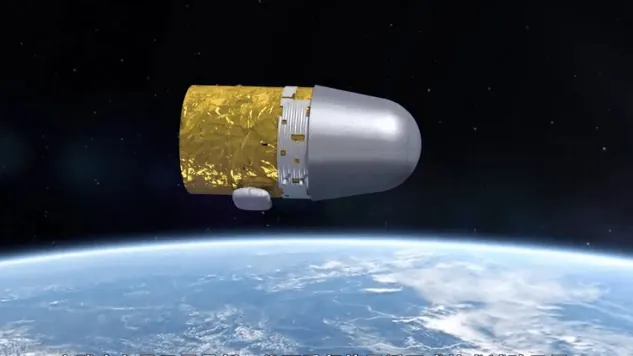
China Makes Strides with Groundbreaking Inflatable Space Module
2024-11-26
Author: Wei
Introduction
In an exciting advancement for space exploration, the Chinese Space Agency has successfully tested a revolutionary inflatable space module as part of its Shijian-19 satellite mission. While the concept of inflatable modules dates back to NASA's explorations in the 1960s, China's recent endeavors mark a significant step forward.
Successful Testing
On October 10th, the tested module returned to Earth, landing safely in the Gobi Desert after demonstrating its capabilities in orbit. Unlike traditional spacecraft which require complex structures, inflatable capsules present a lightweight and efficient solution that enables easier launches and expansions for space stations—a method that NASA has also pursued for the International Space Station (ISS).
Historical Context and Interest
The potential of inflatable technology gained momentum with initiatives like TransHub in the past. Although the project was ultimately canceled, it laid the groundwork for innovations like Bigelow Aerospace's BEAM, which was successfully tested aboard the ISS in 2016. This success has sparked interest in inflatable habitats, which may increasingly become integral to future space missions.
CNSA's Role in Space Exploration
The Chinese National Space Administration (CNSA) is emerging as a key player on the empty canvas of space. Established in 1993, the CNSA has already made its mark with ambitious missions, such as the Chang’e lunar explorations and the Tianwen-1 Mars rover, building its reputation as a formidable force in global space endeavors. With the Tiangong space station operational since 2021, the possibility of crewed lunar missions is also on the horizon.
Details on the Shijian-19 Mission
On September 27th, the CNSA launched the Shijian-19 retrievable satellite from the Jiuquan launch site. This mission included a test of an inflatable module developed by the China Academy of Space Technology (CAST). The module, crafted from composite materials, successfully completed its orbital test and demonstrated robust capabilities, resembling the structure of the BEAM module.
Innovative Design and Future Development
The design of the inflatable module involves compressing and folding it for launch and then inflating it upon reaching orbit, drastically decreasing both construction costs and launch complexities. Following this successful trial, CAST is set to develop larger inflatable modules, advancing the technology significantly. To arrive at this pivotal moment, extensive ground tests were conducted to confirm the module's airtightness and ability to withstand extreme pressures, vibrations, and impacts from space debris.
Looking Ahead
Looking ahead, the CNSA has ambitious plans to expand its Tiangong space station, with inflatable modules likely to be integral to these developments. The next module planned is expected to be a multifunctional capsule that can facilitate the addition of further structures, enhancing the station's capabilities.
Conclusion
This breakthrough not only paves the way for China's continued success in space but also opens up new frontiers for collaborative international research and exploration of habitats beyond Earth, marking a potential new era in our quest to understand the cosmos. As the race for space continues to heat up, China's innovations may very well shape the future of human habitation in the stars!



 Brasil (PT)
Brasil (PT)
 Canada (EN)
Canada (EN)
 Chile (ES)
Chile (ES)
 España (ES)
España (ES)
 France (FR)
France (FR)
 Hong Kong (EN)
Hong Kong (EN)
 Italia (IT)
Italia (IT)
 日本 (JA)
日本 (JA)
 Magyarország (HU)
Magyarország (HU)
 Norge (NO)
Norge (NO)
 Polska (PL)
Polska (PL)
 Schweiz (DE)
Schweiz (DE)
 Singapore (EN)
Singapore (EN)
 Sverige (SV)
Sverige (SV)
 Suomi (FI)
Suomi (FI)
 Türkiye (TR)
Türkiye (TR)